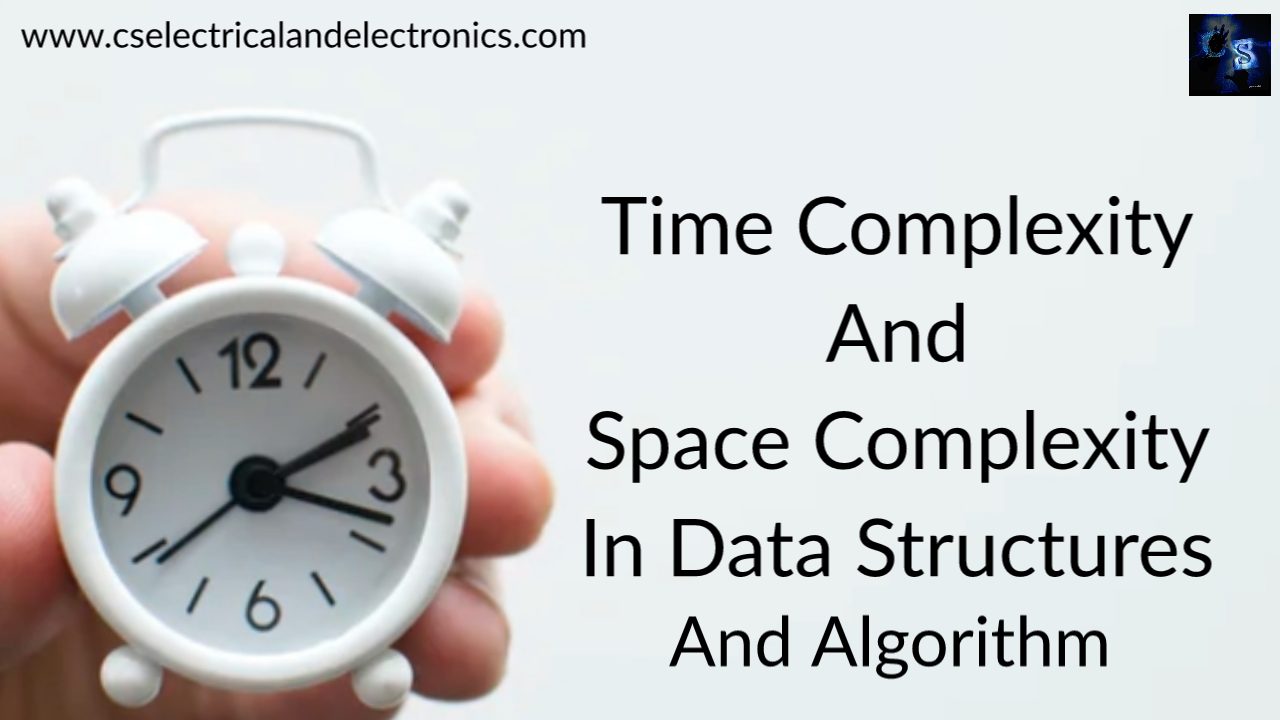What Is Time Complexity And Space Complexity Algorithm With Example
Hello guys, welcome back to my blog. In this article, I will discuss what is time complexity, what is space complexity, an example of time complexity and space complexity, etc.
If you have any doubts related to electrical, electronics, and computer science, then ask questions. You can also catch me on Instagram – Chetan Shidling.
Also, read:
- High Salary Engineering IT Jobs, Companies Paying Huge Money.
- What Is HTML, CSS, And JavaScript In Web Development.
- What Is SEO, Why You Need, How SEO Works, You Can Do Your SEO.
Time Complexity And Space Complexity
Suppose Z is an algorithm and N be the size of the data in the input, space and time used by algorithm Z are the two main factors that decide the efficiency of Z. Time factor is determined by counting the number of key operations such as comparisons in the sorting algorithm. Space factor is determined by counting the maximum space of memory required by the algorithm.
The complexity of an algorithm f(n) gives the running time or/and the storage needed by the algorithm in terms of N as the size of data in the input.
Space Complexity
The space complexity of an algorithm describes the quantity of memory space needed by the algorithm in its life cycle. The space needed by an algorithm is equal to the sum of the following two elements.
A fixed part is a space needed to store certain data and variables, which are independent of the size of the problem. For example, constants used and simple variables, program size, etc.
A variable part is a space needed by variables whose size depends on the size of the problem. For example, dynamic memory allocation, recursion stack space, etc.
Space complexity S(P) of any algorithm P is S(P) = C + SP(l), where C is the part that is fixed and S(l) is the part that is variable of the algorithm, that depends on instance characteristics l.
Following is a good example that tries to tell the complexity concept.
Example:
Algorithm: SUM(A, B)
Step 1 - START
Step 2 - C <- A + B + 10
Step 3 - Stop
Here we have the three variables A, B, & C, and one constant. Hence S(P) = 1 + 3. Now, space depends on data types of given variables and constant types and it will be multiplied accordingly.
Time Complexity
The time complexity of an algorithm represents the quantity of time needed by the algorithm to run to completion. Time requirements can be defined as a numerical function T(n), where T(n) can be measured as the number of steps, provided each step consumes constant time.
For example, the addition of two n-bit integers takes n steps. Consequently, the total computational time is T(n) = c*n, where c is the time taken for the addition of two bits. Here, we observe that T(n) grows linearly as the input size increases.
Well, guys, this was about Time Complexity And Space Complexity. I hope this article “Time Complexity And Space Complexity” may help you all a lot. Thank you for reading.
Also, read:
- 100+ C Programming Projects With Source Code, Coding Projects Ideas
- 1000+ Automotive Interview Questions With Answers
- 1000+ Interview Questions On Java, Java Interview Questions, Freshers
- App Developers, Skills, Job Profiles, Scope, Companies, Salary
- Applications Of Artificial Intelligence (AI) In Renewable Energy
- Applications Of Artificial Intelligence, AI Applications, What Is AI
- Applications Of Data Structures And Algorithms In The Real World
- Array Operations In Data Structure And Algorithms Using C Programming
